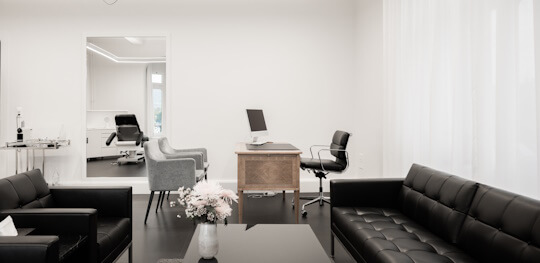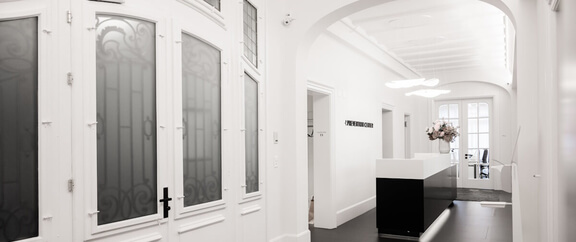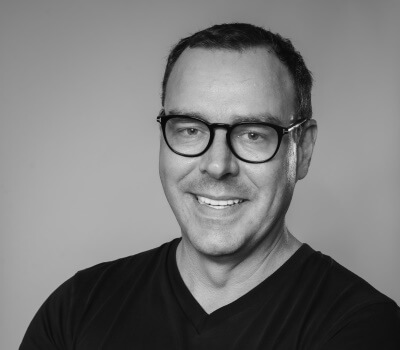Facts about abdominal etching
| Treatment duration | Approx. 1–4 hours |
|---|---|
| Anaesthesia | Local anaesthetic, sedation (or general anaesthetic if necessary) |
| Admission | Outpatient |
| Aftercare | Compression clothing (approx. 4–6 weeks) |
| Presentable | After approx. 1–3 days |
| Exercise | After approx. 3–4 weeks |
| Price | Dependent on treatment scope |
Well-defined chest and abdominal muscles are considered very attractive, particularly in men. Yet, people sometimes lack the time or opportunity to attend the gym on a regular basis – and, in some cases, small fat pads can stubbornly stick around despite an intense exercise regime. At the prevention-center in Zurich, we offer abdominal etching (also known as six-pack surgery) to ensure you can still realise your goal of achieving a six-pack.
Benefits of abdominal etching at the prevention-center in Zurich

- Many years’ experience performing abdominal etching
- Detailed personal consultation
- Individual treatment plans
- Natural results that are entirely harmonious with your silhouette
- Diligent aftercare
FAQs about abdominal etching
Is there a surgical route to a six-pack?
Yes, this is possible in principle with the help of liposuction. However, abdominal etching is primarily only possible for people who already have a relatively well defined physique. It is less suitable for people who are considerably overweight as too much fat tissue would have to be removed to contour the underlying abdominal muscles.
What does abdominal etching involve?
An abdominal etching procedure carefully removes excess fat deposits from the abdominal region. Firstly, a tumescent solution is injected into the fat tissue. This loosens the cells so that they are easily to remove, thereby exposing the underlying musculature, which makes it possible to perform contouring. Unlike conventional liposuction, the primary aim is not to remove fat cells but to precisely define the underlying abdominal muscles. The more defined the existing muscles are, the more effective the treatment is.
If necessary, the treatment can be supplemented through targeted injection of a special filler (called Lanluma). It contains particles that stimulate the body’s natural collagen formation processes, which adds volume. This allows our practitioners to model and contour the six-pack with even greater precision.
What do I need to consider before an abdominal etching procedure?
You must be around normal weight and have remained at that weight for several months to be a candidate for abdominal etching. If you already have defined abdominal muscles, this simplifies the procedure and allows the surgeon to work with even greater precision to achieve the desired results. Healthy nutrition and regular exercise are also important – not only to meet the requirements for the treatment but also to maintain the results over the long term.
What does abdominal etching in Zurich involve?
We hold a detailed personal consultation before every treatment at our clinic in Zurich. This allows us to explore your wishes and expectations and determine whether we can achieve them with abdominal etching. If we can, we will provide extensive information on the procedure itself and the risks involved. And, of course, you will have the opportunity to ask any questions you have.
On the day of the procedure, the areas to be treated and the contours (which will later form the six-pack) will be sketched out on your torso. We then inject a tumescent solution, which serves two purposes: it contains a local anaesthetic and also loosens the fat cells, which makes them easier to remove during liposuction. This exposes the underlying musculature. The procedure takes between 1 and 4 hours depending on your desired results (i.e. whether the procedure aims to define only the front-facing muscles or also includes the lateral abdominal muscles), the amount of fat tissue to be removed and the type of anaesthesia.
If the procedure is performed on an outpatient basis under local anaesthetic or sedation, you will be free to leave the clinic afterwards. You will then have to wear compression clothing for a certain time. We will provide further aftercare recommendations to support the healing process.
What do I need to bear in mind after abdominal etching?
Patients are usually presentable again after 1 to 3 days, at which point you can get back to your usual routine. You must wear compression clothing for a period of 4 to 6 weeks to support the healing process; lymphatic drainage may also be beneficial in some cases. You should make sure that the treated area is not exposed to direct sunlight for the first three months after the procedure. You should also avoid physically strenuous activities during this period. However, once the healing process is complete, you must make sure to engage in plenty of exercise and maintain a healthy lifestyle. If you do not, there is a risk of the treatment results becoming compromised.
When will the results of abdominal etching be visible and how long will they last?
You will experience swelling in the treated area immediately after the procedure. This swelling will recede on its own during the healing process, though it may take some time. Exactly how long differs from patient to patient. For most patients, the swelling fully recedes within 3 to 4 months, at which point the final results become visible. The results of abdominal etching can last several years, provided that patients continue to eat a healthy, balanced diet and get regular exercise. A Lanluma injection can also support the treatment results. The effects of the injection develop within 2 to 3 months and last for up to two years.
Are there risks involved in abdominal etching?
As with any operation, abdominal etching entails general surgical risks (and, if performed under general anaesthetic, is also subject to anaesthetic risks). In isolated cases, patients experience circulatory disorders, wound-healing disorders and infections. These risks can be minimised by relying on specialist practitioners and maintaining the highest hygiene standards – measures we take at the prevention-center as a matter of course. In some cases, patients experience a feeling of tightness in their skin.
Contact

PREVENTION-CENTER AG UTOSCHLOSS
Utoquai 31
8008 Zürich
How to get there
PREVENTION-CENTER AG ZUG
Aabachstrasse 8
6300 Zug
How to get there
PREVENTION-CENTER AG BERN
Kornhausplatz 7
3011 Bern
How to get there
PREVENTION-CENTER AG ST. GALLEN
Kornhausstrasse 25
9000 St. Gallen
Coming Soon
VISITING HOURS
| MO - FR | 8 AM - 6 PM |
OVER THE PHONE
| MO - FR | 8 AM - 5 PM |

